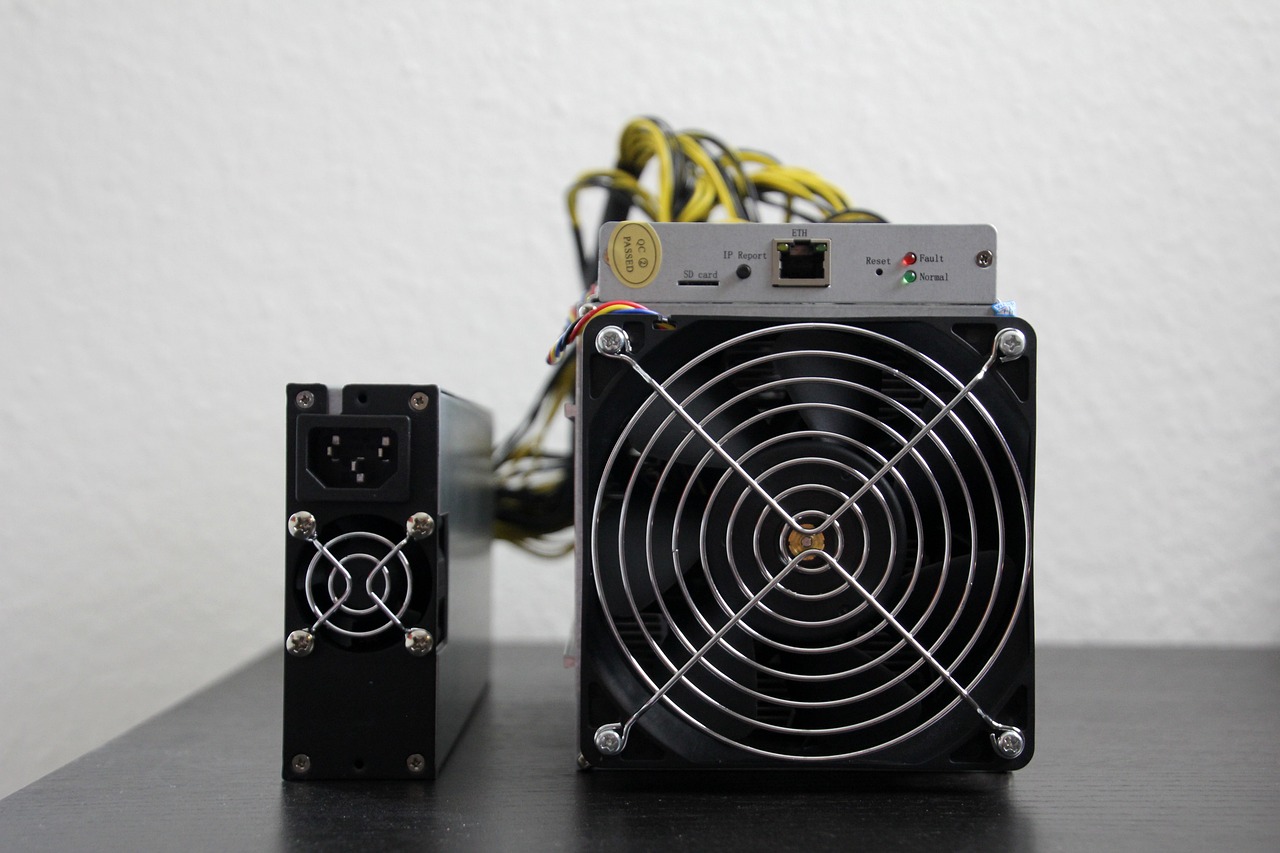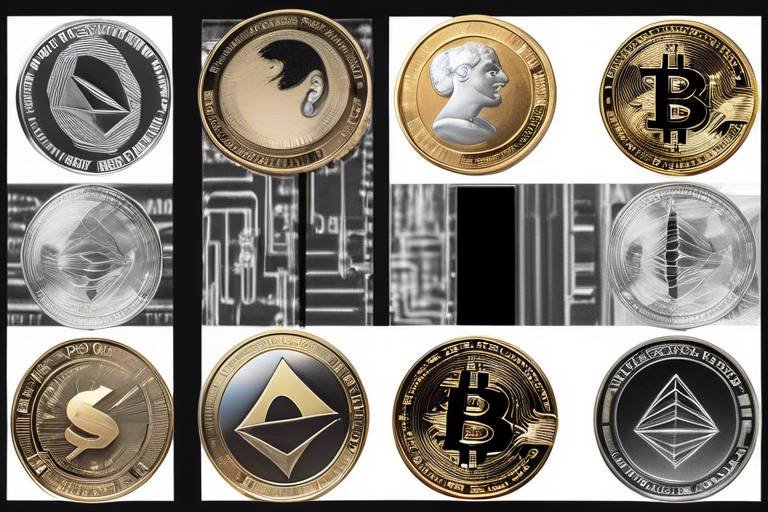Staking vs. Mining - Which is More Profitable?
The world of cryptocurrency is filled with opportunities, but two of the most popular methods for earning returns are staking and mining. Both methods have their own unique characteristics, advantages, and challenges. As an investor, you might find yourself pondering which of these options could yield better profits for you. In this article, we'll delve deep into the intricacies of staking and mining, examining their profitability, risks, and the factors that influence your returns. By the end, you should have a clearer understanding of which path aligns better with your financial goals.
Staking is essentially the act of locking up your cryptocurrency assets in a proof-of-stake (PoS) blockchain network to support its operations, like validating transactions and securing the network. When you stake your coins, you become part of a consensus mechanism that rewards you with additional coins for your participation. This process not only helps maintain the integrity of the blockchain but also allows you to earn passive income.
One of the primary benefits of staking is the relatively low barrier to entry. You don’t need to invest in expensive hardware or consume vast amounts of electricity. Instead, you can simply hold your coins in a compatible wallet, and they’ll start earning rewards over time. The returns can vary based on the network’s staking rewards, but many investors find it an appealing way to grow their assets without the complexities of mining.
Mining, on the other hand, is the process by which transactions are verified and added to the blockchain. This is done through solving complex mathematical problems using powerful computers. The first miner to solve the problem gets to add the block to the blockchain and is rewarded with newly minted coins. While mining can be immensely profitable, it’s also quite resource-intensive, requiring significant investment in hardware and energy.
For those considering mining, it’s essential to understand that profitability can fluctuate dramatically based on various factors, including cryptocurrency prices, mining difficulty, and energy costs. Additionally, the initial setup cost can be quite high, which might deter some potential miners. However, for those who can navigate these challenges, mining can offer substantial rewards.
Understanding the differences between proof of stake (PoS) and proof of work (PoW) is crucial when deciding between staking and mining. In PoS, validators are chosen based on the number of coins they hold and are willing to "stake." This method is generally more energy-efficient and environmentally friendly compared to PoW, where miners compete to solve puzzles using significant computational power.
Here’s a quick comparison of the two mechanisms:
| Feature | Proof of Stake (PoS) | Proof of Work (PoW) |
|---|---|---|
| Energy Consumption | Low | High |
| Hardware Requirement | Minimal | High |
| Rewards | Stable, predictable | Variable, dependent on market |
One of the most talked-about aspects of mining is its energy consumption. Mining operations often require vast amounts of electricity, leading to high operational costs. This not only impacts profitability but also raises environmental concerns. In contrast, staking is much more energy-efficient, allowing investors to earn rewards without the hefty electricity bills.
When it comes to hardware, mining demands a significant upfront investment. Specialized hardware, known as ASICs (Application-Specific Integrated Circuits), is often necessary to compete effectively in the mining landscape. This can be a daunting barrier for new entrants. On the flip side, staking typically requires just a compatible wallet and the coins you wish to stake, making it much more accessible for the average investor.
Analyzing the profitability of staking versus mining involves understanding various factors such as market conditions, rewards, and risks. While staking can offer steady returns, mining profits can be highly volatile, influenced by the ever-changing cryptocurrency market. It’s essential to evaluate current market trends, potential rewards, and your risk tolerance before making a decision.
While staking can be lucrative, it’s not without its risks. Market volatility can lead to significant fluctuations in the value of your staked assets. Additionally, there’s the risk of losing your staked coins if the network experiences issues or if the project fails. However, diversifying your staking portfolio and choosing reputable projects can help mitigate these risks.
Mining also comes with its set of risks. Hardware failure can lead to downtime, impacting profitability. Moreover, fluctuations in cryptocurrency prices can affect your overall earnings. As a miner, you must stay informed about market trends and be prepared to adapt your strategy accordingly.
Ultimately, the decision to stake or mine boils down to your individual goals, resources, and risk tolerance. If you prefer a more hands-off approach with lower initial costs, staking might be the way to go. Conversely, if you’re willing to invest in hardware and navigate the complexities of mining, you could potentially reap higher rewards. Consider your options carefully and choose the path that aligns best with your investment strategy.
- Can I do both staking and mining? Yes, many investors choose to diversify their portfolios by engaging in both staking and mining.
- Is staking safer than mining? Generally, staking is considered to be less risky due to its lower barriers to entry and energy consumption.
- How do I start staking or mining? To start staking, you need to hold coins in a compatible wallet. For mining, you’ll need to invest in the necessary hardware and set up a mining rig.

Understanding Staking
This article explores the profitability of staking and mining in the cryptocurrency world, examining their differences, advantages, and potential returns to help investors make informed decisions.
Staking is like putting your money in a high-yield savings account, but instead of earning interest from a bank, you’re earning rewards from a blockchain network. When you stake your cryptocurrency, you essentially lock it up to support the operations of a proof-of-stake (PoS) blockchain. This process not only helps secure the network but also allows you to earn rewards, often in the form of additional cryptocurrency. It’s a win-win situation where your assets are working for you while you sit back and relax.
Now, you might be wondering how exactly staking works. In a PoS system, validators are chosen to create new blocks and confirm transactions based on the number of coins they hold and are willing to "stake." The more coins you stake, the higher your chances of being selected as a validator. This selection process is generally more energy-efficient than traditional mining, which is a huge advantage. Imagine trying to win a lottery where the more tickets you buy, the better your odds—staking operates on a similar principle.
One of the most appealing aspects of staking is its passive income potential. Many investors love the idea of earning rewards without the need for complex hardware or constant monitoring. Here are a few benefits of staking:
- Lower Entry Barriers: Unlike mining, which often requires expensive equipment, staking can be done with just a wallet and some cryptocurrency.
- Eco-Friendly: Staking consumes significantly less energy compared to mining, making it a more sustainable option for the environment.
- Flexibility: Many staking platforms allow you to withdraw your assets at any time, providing liquidity that traditional savings accounts don’t offer.
However, it’s essential to note that staking isn’t without its risks. Market volatility can affect the value of your staked assets, and there’s always the possibility of losing your initial investment if the network suffers from issues like hacking or poor governance. Therefore, while staking can be a lucrative investment strategy, it’s crucial to do your homework and understand the specific risks involved.
In summary, staking offers a unique opportunity for investors looking to earn passive income while supporting blockchain networks. By locking up your assets, you can contribute to the security and efficiency of the network while potentially reaping rewards. Just remember to weigh the benefits against the risks and choose wisely!
Mining is the process of validating transactions and adding them to a blockchain by solving complex mathematical problems. Here, we’ll explore how mining operates and its profitability factors.
This section delves into the two primary consensus mechanisms: proof of stake (used in staking) and proof of work (used in mining), highlighting their distinct characteristics and implications for profitability.
Mining often requires significant energy resources, leading to high operational costs. This subsection discusses the environmental impact and energy expenditures associated with mining compared to staking.
Mining necessitates specific hardware to solve cryptographic puzzles, which can be costly. This part examines the hardware investments needed for mining versus the minimal requirements for staking.
Analyzing the profitability of staking and mining involves various factors, including market conditions, rewards, and risks. This section will provide insights into potential returns from both methods.
While staking offers rewards, it carries risks such as market volatility and potential loss of staked assets. This section discusses these risks and how to mitigate them.
Mining also poses several risks, including hardware failure and fluctuating cryptocurrency prices. Here, we will analyze these risks and their impact on mining profitability.
Deciding whether to stake or mine depends on individual goals, resources, and risk tolerance. This final section offers guidance on how to choose the most suitable option for your investment strategy.
Q: What is the main difference between staking and mining?
A: The primary difference lies in the consensus mechanisms they use. Staking relies on proof-of-stake, while mining operates on proof-of-work.
Q: Is staking safer than mining?
A: Generally, staking is considered safer as it requires less hardware investment and energy consumption, but both have their risks.
Q: Can I lose my staked assets?
A: Yes, market volatility can lead to losses, so it's essential to research before staking your assets.
Q: How do I start staking?
A: To start staking, you need to choose a cryptocurrency that supports staking, acquire the coins, and then lock them in a wallet or staking platform.

Understanding Mining
Mining is a fundamental process in the cryptocurrency world, serving as the backbone of many blockchain networks. At its core, mining involves validating transactions and adding them to a blockchain by solving complex mathematical problems. This process not only secures the network but also creates new coins, rewarding miners for their efforts. Imagine it as a digital treasure hunt where miners compete to solve intricate puzzles, and the first to crack the code gets to add a new block to the chain. This competitive nature is what makes mining both exciting and profitable.
To grasp the essence of mining, it's essential to understand how it operates. When a transaction is initiated, it is broadcasted to the network. Miners then gather these transactions into a block and race against each other to solve a cryptographic puzzle associated with that block. The difficulty of these puzzles is adjusted regularly to ensure that a new block is added approximately every ten minutes, maintaining a steady flow of new transactions. Once a miner successfully solves the puzzle, they broadcast their solution to the network, and if validated by others, they receive a reward in the form of cryptocurrency.
However, mining isn't just about solving puzzles; it also requires significant resources. Miners must invest in powerful hardware, such as Graphics Processing Units (GPUs) or Application-Specific Integrated Circuits (ASICs), which are designed specifically for mining tasks. The cost of this hardware can be substantial, and with the ever-evolving technology, miners often find themselves needing to upgrade frequently to remain competitive. The following table outlines some common mining hardware and their associated costs:
| Hardware Type | Cost (Approx.) | Hash Rate (MH/s) |
|---|---|---|
| GPU (e.g., Nvidia RTX 3080) | $700 | 90 |
| ASIC Miner (e.g., Bitmain Antminer S19) | $3,000 | 110 TH/s |
| FPGA Miner | $1,500 | 5 GH/s |
In addition to hardware costs, miners must also consider other operational expenses, such as electricity. Mining is notorious for its high energy consumption, which can lead to hefty electricity bills. This aspect raises questions about the sustainability of mining operations, especially in regions where electricity is expensive or sourced from non-renewable resources. It's not uncommon for miners to seek locations with cheaper energy rates or even invest in renewable energy sources to offset these costs.
Moreover, the profitability of mining is not static; it fluctuates based on various factors, including the price of the cryptocurrency being mined, the network's difficulty level, and the overall market conditions. As more miners join the network, the competition increases, leading to higher difficulty levels and potentially lower returns for individual miners. Therefore, understanding the market dynamics is crucial for anyone considering mining as a viable investment strategy.
In conclusion, mining is a complex yet fascinating process that plays a vital role in the cryptocurrency ecosystem. While it offers the potential for substantial rewards, it also comes with significant risks and costs. As the landscape evolves, aspiring miners must stay informed and adapt their strategies to navigate the challenges and opportunities that lie ahead.
- What is the main difference between mining and staking? Mining involves solving mathematical problems to validate transactions, while staking locks up assets to support network operations without the need for complex computations.
- Can anyone start mining? Yes, but it requires a significant investment in hardware and a good understanding of the mining process and market conditions.
- Is mining environmentally friendly? Mining can have a substantial environmental impact due to high energy consumption, but some miners are turning to renewable energy sources to mitigate this effect.

Proof of Stake vs. Proof of Work
When it comes to the world of cryptocurrencies, the terms Proof of Stake (PoS) and Proof of Work (PoW) are often thrown around, but what do they really mean? At their core, these are two distinct consensus mechanisms that determine how transactions are verified and added to the blockchain. Think of them as two different highways leading to the same destination but with different tolls and traffic rules.
In the PoW system, miners compete against each other to solve complex mathematical puzzles. This process is akin to a high-stakes race where the first one to cross the finish line gets to add a new block to the blockchain and is rewarded with cryptocurrency. However, this method is energy-intensive and requires significant computational power. It’s like trying to win a marathon while carrying a heavy backpack filled with bricks—exhausting and costly!
On the flip side, PoS operates on a completely different premise. Instead of competing, participants (or validators) lock up a certain amount of cryptocurrency as collateral to validate transactions. The more coins you stake, the higher your chances of being chosen to validate the next block. It’s like having a VIP pass where the more you invest, the better your chances of getting front-row seats to the concert. This method not only reduces energy consumption but also encourages long-term holding of the cryptocurrency, which can lead to price stability.
| Feature | Proof of Work | Proof of Stake |
|---|---|---|
| Energy Consumption | High | Low |
| Hardware Requirements | Specialized mining rigs | Standard computer |
| Rewards Distribution | Based on computational power | Based on amount staked |
| Security | Susceptible to 51% attacks | Less likely due to financial investment |
Ultimately, the choice between PoW and PoS boils down to your values and goals as an investor. Do you prefer the thrill of competition and the potential for high rewards, albeit with high risks? Or do you lean towards a more sustainable approach that encourages long-term investment? Each method has its unique advantages and drawbacks, and understanding these can help you make a more informed decision in your cryptocurrency journey.

Energy Consumption
When it comes to the world of cryptocurrency, energy consumption plays a pivotal role, especially in the debate between mining and staking. Mining, the traditional method of validating transactions on a blockchain, is notorious for its hefty energy demands. Miners utilize powerful hardware to solve complex mathematical puzzles, which not only requires substantial electricity but also generates a significant carbon footprint. In fact, studies have shown that the energy consumption of Bitcoin mining alone can be comparable to that of entire countries!
On the flip side, staking operates on a different paradigm. It is part of the Proof of Stake (PoS) consensus mechanism, which drastically reduces energy consumption. Instead of competing to solve puzzles, stakers lock up their cryptocurrency to support network operations and validate transactions. This method is much less energy-intensive, as it does not rely on the same computational power as mining. To put it into perspective, consider this analogy: if mining is like running a marathon, where every runner uses all their energy to outpace one another, staking is more like a group yoga session, where everyone calmly participates without exhausting themselves.
To highlight the differences in energy consumption between mining and staking, let's take a look at the following table:
| Method | Energy Consumption | Environmental Impact |
|---|---|---|
| Mining | High | Significant carbon footprint due to electricity use |
| Staking | Low | Minimal environmental impact |
This stark contrast in energy consumption raises important questions about sustainability in the cryptocurrency space. As environmental concerns grow, many investors and developers are shifting their focus toward PoS and staking mechanisms, which not only offer a more eco-friendly alternative but can also yield competitive returns. In a world increasingly aware of its energy consumption, the decision to stake rather than mine could be seen as a step toward a more sustainable future in cryptocurrency.

Hardware Requirements
When it comes to mining cryptocurrencies, the hardware requirements can be quite substantial, often acting as a significant barrier to entry for many aspiring miners. Unlike staking, which requires minimal technological investment, mining demands a specific set of powerful equipment designed to solve complex mathematical problems. This process not only validates transactions but also secures the network, making the right hardware essential.
At the heart of mining operations are ASICs (Application-Specific Integrated Circuits) and GPUs (Graphics Processing Units). While ASICs are tailored specifically for mining and offer unparalleled efficiency, they can be quite expensive and are often limited to mining a single algorithm. On the other hand, GPUs are more versatile and can mine various cryptocurrencies, but they typically require a more extensive setup to achieve optimal performance.
Here’s a quick breakdown of the essential hardware components needed for mining:
| Component | Description | Estimated Cost |
|---|---|---|
| ASIC Miner | Specialized hardware designed for mining specific cryptocurrencies. | $1,000 - $10,000+ |
| GPU Rig | A setup with multiple GPUs for mining various coins. | $500 - $5,000+ |
| Motherboard | Supports multiple GPUs and connects all components. | $100 - $300 |
| Power Supply | Provides sufficient power to all components. | $100 - $300 |
| Cooling System | Ensures the hardware remains at optimal temperatures. | $50 - $200 |
| Mining Software | Programs necessary to connect to mining pools and manage the mining process. | Free - $100 |
In addition to the initial hardware setup, it's crucial to consider the ongoing costs associated with mining, such as electricity consumption and maintenance. Miners often find themselves grappling with high energy bills, particularly in regions where electricity rates are steep. This factor can significantly impact the overall profitability of mining operations.
In contrast, staking is far less demanding in terms of hardware. The primary requirement is a reliable internet connection and a device to store your cryptocurrency. This could be as simple as a laptop or even a smartphone, making staking an attractive option for those who prefer a more hands-off approach. Furthermore, staking rewards can often be earned passively, without the need for constant monitoring or maintenance.
Ultimately, the choice between staking and mining boils down to your available resources and personal preferences. If you're ready to invest in the necessary hardware and are comfortable with the associated risks, mining could be a rewarding venture. However, if you prefer a low-maintenance investment strategy, staking might be the way to go.
- What is the main difference between staking and mining? Staking involves locking up your cryptocurrency to support network operations, while mining requires solving complex mathematical problems using specialized hardware.
- Is staking less risky than mining? Generally, yes. Staking usually has lower upfront costs and requires less technical knowledge, making it a less risky investment.
- Can I mine and stake the same cryptocurrency? In some cases, yes. However, many cryptocurrencies use either proof of work (mining) or proof of stake (staking) but not both.
- How do I choose between staking and mining? Consider your resources, technical skills, and risk tolerance. If you have the capital and expertise, mining may be suitable; otherwise, staking is a simpler option.

Profitability Analysis
When diving into the world of cryptocurrency, one of the most pressing questions on every investor's mind is, "How can I maximize my returns?" Both staking and mining present unique opportunities, but their profitability can vary significantly based on several factors. Let's break it down.
First off, it's essential to understand that the profitability of staking and mining is heavily influenced by market conditions. For instance, if the cryptocurrency market is booming, the rewards from both staking and mining can be substantial. On the other hand, during a downturn, those rewards can diminish rapidly. This volatility is a double-edged sword; while it can lead to significant gains, it can also result in steep losses.
Next, we need to consider the reward structures associated with each method. Staking usually offers a more predictable income stream. Investors receive rewards based on the number of coins they stake and the overall performance of the network. In contrast, mining rewards can be inconsistent and are typically based on the mining difficulty and the number of miners competing for the same block. This means that while staking might offer steady returns, mining can feel like a rollercoaster ride.
To illustrate the potential returns from staking versus mining, let's take a look at a comparison table:
| Factor | Staking | Mining |
|---|---|---|
| Initial Investment | Lower (just the coins) | Higher (hardware and electricity) |
| Return Consistency | More consistent | Less consistent |
| Market Dependency | Moderate | High |
| Time Commitment | Low (set and forget) | High (monitoring and maintenance) |
As you can see from the table, staking generally requires a lower initial investment and offers more consistent returns, making it an attractive option for those who prefer a less hands-on approach. Mining, however, can yield higher rewards during favorable market conditions, but it also demands a significant investment in hardware and ongoing electricity costs.
Another critical aspect to consider is risk. With staking, the primary risk comes from market volatility; if the value of the staked coin drops, so does your potential profit. Conversely, mining not only exposes you to market risk but also to operational risks, such as hardware failures and the ever-increasing difficulty of mining certain cryptocurrencies. This can lead to unexpected costs that can eat into your profits.
Ultimately, the profitability of staking versus mining isn't a straightforward answer. It boils down to your individual circumstances, including your investment goals, available resources, and risk tolerance. Are you someone who enjoys the thrill of competition and is willing to invest in hardware? Or do you prefer a more passive approach that allows you to earn rewards simply by holding your assets?
In conclusion, both staking and mining have their unique advantages and challenges. By analyzing the factors that influence profitability, you can make a more informed decision about which method aligns best with your investment strategy.
- What is the primary difference between staking and mining? Staking involves locking up your assets to support a blockchain network, while mining requires solving complex mathematical problems to validate transactions.
- Which method is more profitable? Profitability varies based on market conditions, investment, and operational costs. Staking typically offers more consistent returns, while mining can yield higher rewards but comes with more risks.
- Do I need special equipment for staking? No, staking generally requires just the cryptocurrency you wish to stake, while mining requires specific hardware.
- Can I lose my staked assets? Yes, if the market value of the staked cryptocurrency falls significantly, you could incur losses.

Risks Involved in Staking
Staking has become a popular method for earning passive income in the cryptocurrency world, but it’s not without its pitfalls. One of the most significant risks associated with staking is market volatility. The value of the assets you are staking can fluctuate dramatically, which means that while you might be earning rewards, the overall value of your staked assets could decrease. Imagine putting your money into a high-yield savings account, only to find out that the currency itself has lost a large portion of its value. This uncertainty can be nerve-wracking for investors.
Another risk to consider is the lock-up period. Many staking protocols require you to lock your assets for a specific period, during which you cannot access or sell them. This can be particularly concerning in a volatile market where you might want to cash out quickly. If a sudden market downturn occurs, you could be left holding onto assets that are losing value while you wait to unlock your funds.
There’s also the risk of network issues. If the blockchain network you are staking on experiences technical difficulties, it could lead to missed rewards or even loss of staked assets. For example, if a network undergoes a hard fork or experiences a major hack, your staked assets could be at risk. It’s crucial to choose a reputable and secure network to mitigate this risk.
Furthermore, validator risks come into play. When you stake your assets, you often delegate them to a validator. If that validator behaves maliciously or fails to perform adequately, you could suffer penalties or lose a portion of your staked assets. Therefore, it's essential to do your research and choose validators with a good track record.
Lastly, consider the risk of regulatory changes. The landscape of cryptocurrency regulations is constantly evolving, and any changes in laws or regulations could impact the staking process. For instance, if a government decides to impose strict regulations on staking, it could lead to a decrease in profitability or even make staking illegal in certain jurisdictions.
In summary, while staking can provide lucrative returns, it’s essential to be aware of the various risks involved. Here’s a quick recap of the main risks:
- Market Volatility
- Lock-Up Periods
- Network Issues
- Validator Risks
- Regulatory Changes
By understanding these risks and implementing strategies to mitigate them, investors can make more informed decisions about whether staking is the right choice for them.
- What is staking? Staking involves locking up cryptocurrency to support a blockchain network's operations, earning rewards in return.
- Is staking safe? While staking can be profitable, it carries risks such as market volatility and validator reliability.
- How can I mitigate risks while staking? Researching networks, diversifying your staked assets, and choosing reputable validators can help reduce risks.
- What happens if the value of my staked assets drops? You may still earn rewards, but the overall value of your investment could decline.

Risks Involved in Mining
When it comes to mining cryptocurrencies, many enthusiasts get caught up in the allure of potential profits, but it's crucial to remember that mining isn't without its risks. Just like any investment, the road to success is often paved with challenges that can impact your bottom line. So, what are the most significant risks involved in mining, and how can they affect your profitability?
One of the primary risks associated with mining is hardware failure. Mining requires specific hardware, such as ASICs (Application-Specific Integrated Circuits) or GPUs (Graphics Processing Units), which can be costly and prone to malfunction. Imagine investing thousands of dollars into a rig, only to have it fail due to overheating or component failure. This not only results in immediate financial loss but can also lead to downtime, where you miss out on potential earnings.
Additionally, the fluctuation of cryptocurrency prices poses another considerable risk. The value of the coins you are mining can vary dramatically from day to day, influenced by market trends, news, and other external factors. For instance, if you invest heavily in mining a coin and its value plummets, you could find yourself in a situation where your mining costs exceed your earnings. This volatility can make it challenging to project profitability over time.
Moreover, increased competition is a factor that miners must contend with. As more individuals and companies enter the mining space, the difficulty of mining can increase, leading to lower rewards for existing miners. This is particularly evident in proof-of-work systems, where the network adjusts the difficulty based on the total computational power being used. In essence, more miners mean that each miner's share of the rewards diminishes, which can impact your potential earnings.
Another risk to consider is the cost of electricity. Mining is an energy-intensive process, and the expenses associated with powering your mining rigs can quickly add up. In some regions, electricity costs can be prohibitively high, eating into your profits. Thus, it's essential to evaluate your local energy prices and consider whether mining is financially viable in your area.
Finally, regulatory risks cannot be overlooked. The legal landscape surrounding cryptocurrencies is continually evolving, and new regulations could impact mining operations. For example, some jurisdictions have implemented restrictions or outright bans on mining due to environmental concerns or energy consumption. Being caught off guard by sudden regulatory changes can jeopardize your mining investment.
In summary, while mining can be a lucrative venture, it is essential to approach it with caution. Understanding these risks—hardware failure, price volatility, increased competition, electricity costs, and regulatory challenges—can help you make informed decisions and develop strategies to mitigate them. By being aware of these factors, you can better navigate the complex world of cryptocurrency mining and enhance your chances of achieving profitability.
- What is the most significant risk in cryptocurrency mining? Hardware failure and price volatility are among the most significant risks.
- How can I mitigate risks in mining? Regular maintenance of hardware, choosing the right coins to mine, and staying updated on market trends can help.
- Are there any legal risks associated with mining? Yes, regulations can change, and some areas may impose restrictions or bans on mining activities.

Choosing Between Staking and Mining
Deciding whether to stake or mine in the cryptocurrency world can feel like standing at a crossroads, each path promising its own unique rewards and challenges. It’s crucial to assess your individual goals, resources, and risk tolerance before making a choice. Both methods have their merits, but they cater to different types of investors. Are you the type who enjoys a hands-on approach, or do you prefer a more passive income strategy? Let’s break it down.
Staking can be likened to putting your money in a high-yield savings account. You lock up your assets, and in return, you earn rewards over time. This method is generally less technical and requires minimal hardware investment. If you’re looking for a way to earn passive income without the headaches of managing physical equipment, staking might be your best bet. You simply need to choose a reliable platform, stake your assets, and watch your rewards accumulate.
On the other hand, mining is more akin to running a small business. It requires a significant upfront investment in hardware and ongoing costs such as electricity and maintenance. The rewards can be substantial, but they come with a higher level of risk and uncertainty. Market volatility can affect your profits drastically, and if your hardware fails, you could be left with a hefty bill and no returns. So, if you thrive on excitement and are willing to invest time and money into optimizing your setup, mining could be the thrilling venture you’re looking for.
Here are a few factors to consider when choosing between staking and mining:
- Investment Size: Staking often requires less initial investment compared to mining, which needs expensive hardware.
- Time Commitment: Mining can be time-consuming, requiring constant monitoring and maintenance, while staking is more of a "set it and forget it" approach.
- Risk Tolerance: If you’re risk-averse, staking may be more appealing due to its more predictable returns.
- Market Knowledge: Those who understand the technical aspects of mining and can keep up with market trends may find mining more profitable.
Ultimately, the decision between staking and mining boils down to your personal circumstances and preferences. It’s essential to conduct thorough research and perhaps even try out both methods on a small scale to see which aligns better with your investment strategy. Remember, the cryptocurrency landscape is ever-evolving, and staying informed will help you make the best choices for your financial future.
1. Can I do both staking and mining?
Yes, many investors diversify their strategies by engaging in both staking and mining. This approach can help balance risks and rewards.
2. Which method is more profitable?
Profitability varies based on market conditions, your investment strategy, and the specific cryptocurrencies you choose to stake or mine.
3. What are the tax implications of staking and mining?
Tax regulations vary by country, but generally, both staking rewards and mining income are considered taxable. It’s advisable to consult a tax professional for personalized advice.
4. How do I choose the right cryptocurrency for staking or mining?
Research the market, look for cryptocurrencies with robust communities, and consider their historical performance and potential for growth.
Frequently Asked Questions
- What is the main difference between staking and mining?
Staking involves locking up your cryptocurrency to support the operations of a blockchain network, while mining requires solving complex mathematical problems to validate transactions. In simple terms, staking is like putting your money in a savings account, earning interest, while mining is akin to digging for treasure.
- Which is more profitable, staking or mining?
The profitability of staking versus mining depends on various factors, including market conditions, the specific cryptocurrency, and your investment strategy. Generally, staking can offer more predictable returns, while mining might provide higher rewards but comes with significant risks and costs.
- What are the risks associated with staking?
Staking carries risks such as market volatility, which can affect the value of your staked assets, and the possibility of losing your staked coins due to network issues or penalties. It's essential to understand these risks and choose a reliable staking platform to mitigate them.
- What are the hardware requirements for mining?
Mining typically requires specialized hardware, such as ASICs or high-performance GPUs, which can be quite expensive. In contrast, staking generally has minimal hardware requirements, often just needing a computer or a mobile device to manage your assets.
- How does energy consumption impact mining profitability?
Mining is energy-intensive and can lead to high operational costs, which directly affect profitability. As electricity prices fluctuate, they can eat into your mining profits, making it crucial to factor in energy costs when considering mining as an investment.
- Can I switch between staking and mining?
Yes, you can switch between staking and mining, but it depends on the cryptocurrencies you hold and the platforms available. Some investors choose to stake their coins while mining others, diversifying their strategies to maximize potential returns.
- How do I choose between staking and mining?
Choosing between staking and mining depends on your individual goals, resources, and risk tolerance. If you're looking for a more hands-off approach with potentially steady returns, staking may be the way to go. On the other hand, if you're ready to invest in hardware and take on more risk for the chance of higher rewards, mining could be suitable.



















